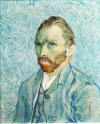|
1 |
 |
 |
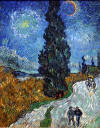 |
The
style of artists changes with age. Although they are
all by Vincent van Gogh ( Dutch, 1853-890), the
first has a slightly different style. The colors are
different. The impasto is the same. The brush
strokes make short thick lines in all three, but in
the first they are straight while the last two are
swirling.
|
|
2 |
 |
 |
 |
Although
they are all by Rembrandt van Rijn (Dutch,
1606–1669), the first two have a similar color
pallet with heavy impasto. The last painting doesn't
use impasto because that would make it look less
real, more like a painting, and less disturbing. |
|
4 |
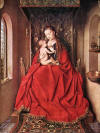 |
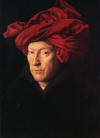 |
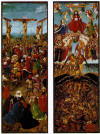 |
Jan
van Eyck (Flemish, 1395–1441) is the artist of all
three. All have great realism - and lush velvet
clothing, but the last has a subject matter that
looks like
Hieronymus Bosch
(Dutch, 450-1516).
What is different about the Bosh? |
|
5 |
 |
 |
 |
Pierre-Auguste
Renoir (French, 1841–1919) painted the first two,
and Mary Cassatt (1844
– 1926) was American, but she
worked in France during the impressionistic
movement. The last painting is a Cassatt. Strangely
enough her work is very much like Renoir, but this
painting is different. Notice the flat solid colored
areas with drypoint shading. It looks unfinished;
only the hair looks finished. |
|
6 |
 |
 |
 |
Amedeo
Modigliani (Italian, 1884 – 1920) also lived in
France. An obvious stylistic trait are the elongated
elegant shapes. The eyes are usually blocked in,
with warm tones, and simple backgrounds. |
|
7 |
 |
 |
 |
The
first is by Andy Warhol (American, 1928 – 1987).
Center is by David Hockney (English, 1937 ). It is
actually similar to the Cassatt in its flat
surfaces. Flag by Jasper Johns (American,
1930). It has a pop art subject although he is no a pop
artist - with a thick impasto texture. |






